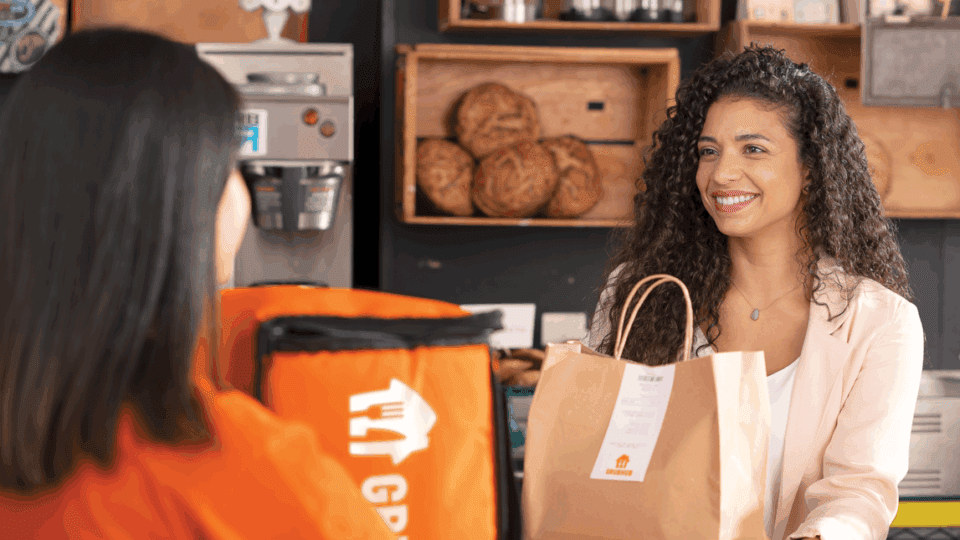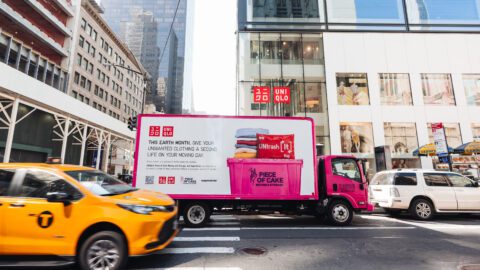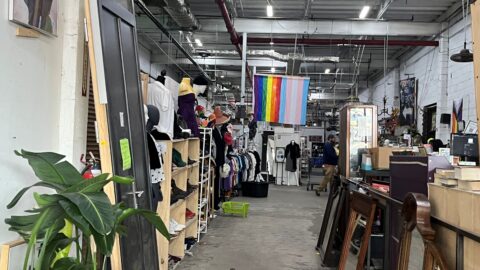Last year, meal delivery platform Grubhub entered the increasingly crowded commerce media arena with the debut of Grubhub Ads, developed in partnership with Koddi. Grubhub was inspired by the meteoric rise of retail media, which also has propelled the debut of media networks from other delivery and transportation services such as Uber and Lyft as well as companies more ancillary to the retail landscape, such as BNPL solution Klarna, payments provider PayPal and United Airlines.
Each new media network comes to the table with a ready-made slate of advertising customers in the form of the companies they already serve through their core business, but each is also challenged to make the case for what differentiates them from the growing commerce media crowd — brands only have so many ad dollars to go around, after all. The Grubhub and Koddi teams took Retail TouchPoints behind the scenes to explore their unique media proposition and share their plans for the future.
New Ad Capabilities + Wonder and Tastemade = An Interesting Media Recipe
The Grubhub Marketplace currently boasts more than 375,000 merchant partners, and while it has expanded beyond its roots in food takeout, restaurants remain the bulk of the companies it serves. That gives Grubhub Ads a distinct focus both on the advertiser and customer sides of the equation.
In fact, the man in charge of the company’s new media network doesn’t have the traditional advertising background one might expect: “I lead our Merchant Solutions team, which is focused on supporting restaurants and merchants beyond the core delivery [offering], so giving them smarter ways to grow and to reach new diners; Grubhub Ads is the latest evolution there,” said Kyle Emmett, Senior Director of Advertising and Merchant Solutions at Grubhub in an interview with Retail TouchPoints. “But I don’t come from a heavy advertising background; my background is in restaurants and hospitality. And [that is reflected in the fact that] as we build out this ads program, the number one thing we’ve been focused on is adding value for our merchant partners, restaurants, and building it the right way to support them.”
Advertisement
The potential value of that ad offering increased exponentially late last year when the company was acquired by “fast fine dining” retailer Wonder Group, which was founded by serial entrepreneur Marc Lore and also owns the meal kit brand Blue Apron. “Bringing Wonder and Grubhub together is the next step in our vision to create the super app for meal time, re-envisioning the future of food delivery,” said Lore at the time of the acquisition.
That ambition also appears to extend to being an advertising partner for food brands of all flavors, as evidenced by Wonder’s subsequent acquisition of the food-centered media company Tastemade earlier this year. The deal provides Wonder with a content studio that has been producing food and cooking content since 2012, and the eventual goal is to allow viewers watching a chef make a signature dish to then easily order it for delivery through Wonder, Grubhub or Blue Apron, Tastemade CEO and Co-founder Larry Fitzgibbon told the Wall Street Journal.
“Content in this space is becoming more and more important, and we have a real opportunity to enrich the content experiences that folks have with Grubhub and monetize it at the same time,” said Eric Brackmann, VP of Commerce Media at Koddi in an interview with Retail TouchPoints. “There is so much that the Wonder [acquisition] unlocks for Grubhub as a brand and the way it engages with diners.”
“We’re really excited about looking at building out a media network that combines Tastemade’s content production and advertising business with Grubhub’s restaurant brands and Koddi’s capabilities, to bring all these things together and provide multiple new ways to reach consumers through a full-funnel approach,” Emmett added.
Building a Media Network that Delivers (Results, That is)
Even before all that comes to fruition, the Grubhub Ads platform is delivering pretty impressive results for its advertisers, which now number in the tens of thousands. In its first year, Grubhub delivered a 6X increase in incremental ROAS (return on ad spend) for some of its largest enterprise merchants, as well as a 13% increase in incremental sales. Additionally, Grubhub itself has seen a 20% increase in ad click-through rates and a 6% increase in revenue.
As those numbers indicate, Grubhub did have an ad offering before it launched its full-fledged media network, which primarily encompassed sponsored listings. But that legacy offering wasn’t built to deliver the kinds of variability, targeting and measurement that Grubhub’s merchants are increasingly demanding, which prompted the partnership with Koddi.
The other challenge for Grubhub is that its merchants include the full spectrum of restaurant ownership, from large national chains to local mom-and-pops, each of which comes to the platform with varying degrees of expertise and resources with regard to marketing and advertising.
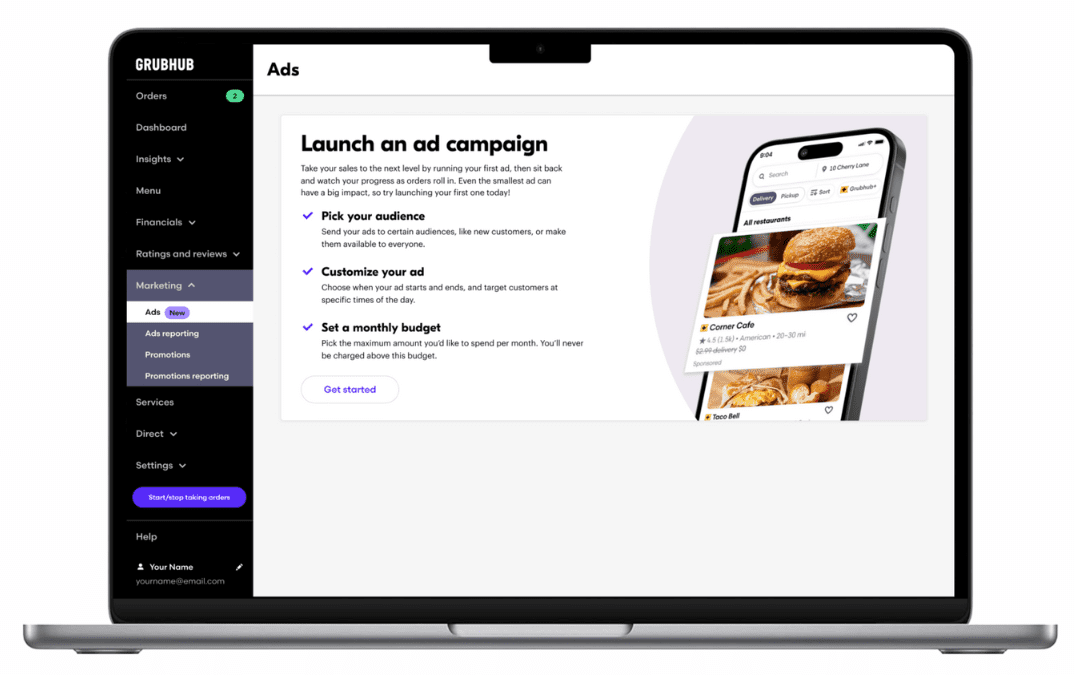
With Koddi, Grubhub was able to launch a fully branded self-serve platform offering granular campaign creation, targeting and reporting features that can serve both merchants with no marketing experience and enterprises with more sophisticated teams and demands. Through the portal, merchants can create customized or quick-start campaigns across a range of formats and placements. The platform also includes a range of performance reports; automated tools to optimize campaigns for better performance; the ability to run tests to measure incrementality; and a Quality Scoring algorithm that helps advertisers boost the relevancy of their ads.
“Now we have capabilities that [work] for both large enterprise brands running through media agencies and the mom-and-pop restaurant down the street that has never advertised before in their life,” said Emmett. “They can do things like target individual geographies at the same time. [Things like] automated bidding and automated campaign improvements are driving additional relevancy. The Quality Scores are allowing them to get more clicks, and not just more clicks, but more revenue as well, which is why we’re seeing such healthy ROAS returns.
“Because we are very targeted [from a category perspective] and we’re building our product focused on a very niche area, in a lot of cases we go deeper rather than wider to really show that value,” Emmett added. “We know [customers] are on Grubhub for a reason — they’re hungry, they want to order, they want to know what’s in their area — so by having these new targeting solutions, we’re able to help them discover restaurants that may not have the same level of awareness as the national brands or discover new items that they didn’t know restaurants carried.”
Zeroing in on the Nuances of Restaurant Commerce
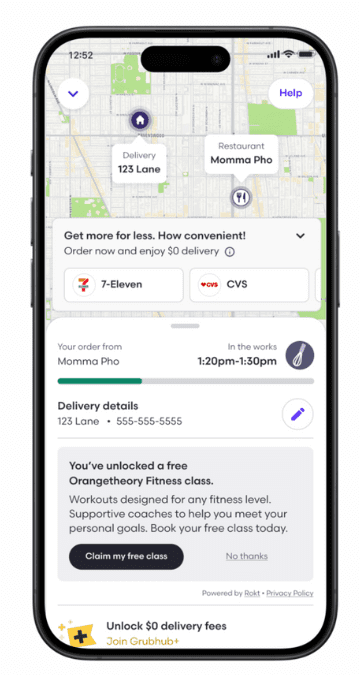
These new targeting capabilities have led to interesting new insights for advertisers. “We’re able to target based on device type, order type, location, intent, cuisine and their dining history,” said Koddi’s Brackmann. “Some of those aren’t necessarily viable targets in broader programmatic ecosystems, but because of that direct relationship Grubhub has with its consumers, they can take that [intel] and let their merchant partners take advantage of it to improve their business.
“Dayparting is a really good example of that,” Brackmann added. “Until I got into this space, I wouldn’t have even thought of this, but restaurants don’t necessarily need to do a lot of advertising during mealtimes. What’s actually way more accretive for them is to daypart and target the in-between times, when there’s still staff in the restaurant, there’s still food in the refrigerator, the building is still there [but business is slower]. Those are the places where we can drive immense amounts of incremental revenue for the partners on the Grubhub platform and makes Grubhub unique in the space.”
“We can [now] go back to merchants and restaurants and tell them, maybe you should invest more using multipliers during lunch,” added Emmett. “Or maybe, if it’s a coffee shop, you want to advertise late at night to get people pre-ordering coffee for the morning, because we’re seeing that those orders are converting better. That’s the type of insights we’re able to give to restaurants so that we’re adding value, not just driving revenue.”
Making Grubhub a ‘Growth Channel for Every Restaurant’
And there are still many more capabilities that Grubhub hopes to add, including expanded relevancy, new ad formats and advanced targeting options. “Grubhub Ads is just a year old, so we’re just getting started,” said Emmett. “There are a lot of things in the works. Think more automation, more insights, smarter optimizations so we can incorporate real-time ordering behaviors and real-time merchant feedback. The goal here is to make Grubhub the key growth channel for every restaurant.”
Brackmann also mentioned off-site advertising as an area of future opportunity, and of course there are the various integrations that could come into play with the expanding Wonder portfolio.
“Grubhub has a very large roadmap where we’re dedicating resources, and advertising falls within that,” said Emmett. “We’re working closely with the Koddi team to share where we’re investing and to understand where Koddi is investing as well, and a lot of times we’re working together to make sure that what we’re working on can deliver the best results for everyone evolved. As much as the tech matters, we’re still in hospitality, it’s a people business, and that’s why [Koddi’s willingness] to build with us and grow with us has been so important.”
“This is a crowded space, there are a lot of folks entering [commerce media],” added Brackmann. “When you look at the broad spectrum of options out there, what I value is the experience — the experience that diners have, the experience that restaurants have, the experience that media buyers have — having that focus is the thing that is most important to me in terms of getting it right for everyone. We want to partner with brands like Grubhub that are doing it right and are really adding value to the ecosystem, not just looking to put ads everywhere.”



